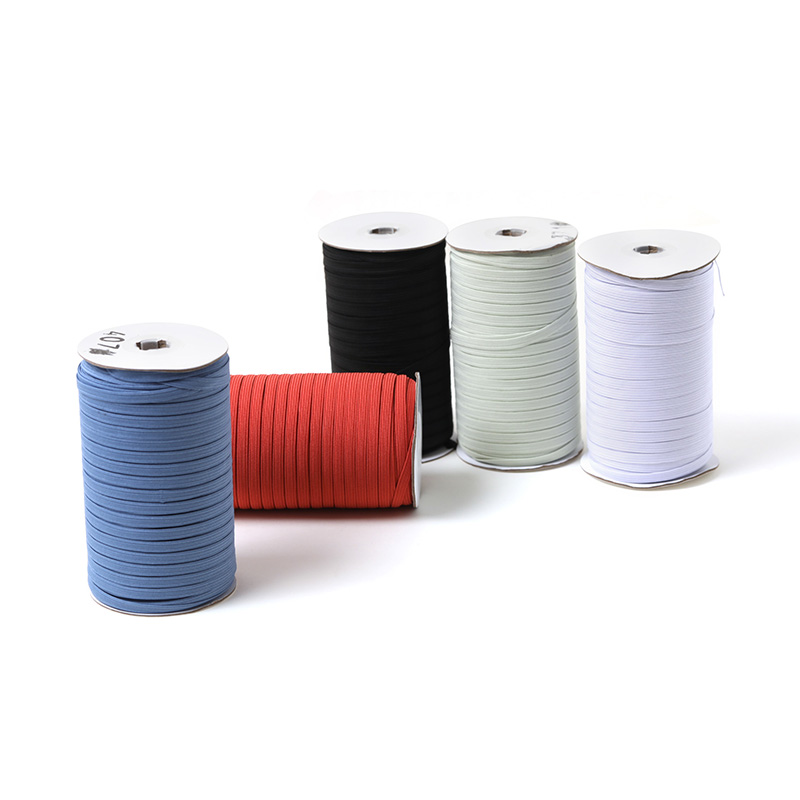Industry
 By Admin
By Admin
Techniques For Dyeing Elastic Bands In Vibrant Colors
Dyeing elastic bands is an essential process in the textile and fashion industry, especially when producing elastic straps for clothing that need to meet both aesthetic and functional demands. Achieving vibrant and consistent colors on elastic materials can be challenging due to their unique composition and stretch properties. However, with the right dyeing techniques and careful attention to detail, manufacturers can produce colorful elastic straps that enhance garment design and durability.

One of the more common types of elastic bands used in apparel is the buttonhole band knitting style. This type features a distinctive knitted structure that provides flexibility and resilience, making it suitable for waistbands and cuffs. Dyeing buttonhole band knitting requires special consideration because the yarns are looped in a way that affects how dye penetrates and sets on the material. Proper dye selection and processing are vital to avoid color unevenness or fading after stretching.
Industrial elastic straps, which are often used in applications beyond clothing such as safety gear or equipment, also demand vibrant colors for visibility and branding purposes. The dyeing process for industrial elastic straps tends to differ slightly from apparel elastics due to differences in material composition and thickness. Many industrial straps use polyester or nylon blends, which react differently to dyes compared to natural fibers or rubber-based elastics.
There are several dyeing techniques commonly used for elastic straps for clothing and industrial purposes. One popular method is piece dyeing, where the elastic is dyed after it has been knitted or woven. This approach allows for dyeing large batches efficiently but requires precise control over temperature and dye concentration to maintain elasticity and colorfastness. For buttonhole band knitting, piece dyeing ensures that the loops absorb color evenly, which contributes to the overall aesthetic of the garment.
Another method is solution dyeing, where the fibers are dyed before the elastic is knitted. This process involves adding color pigments to the polymer solution before it is extruded into fibers. Solution dyeing is known for producing highly durable colors that resist fading from sunlight and washing. Although more costly, this technique is often chosen for industrial elastic straps used in outdoor or heavy-duty environments because of its lasting color integrity.
Screen printing and heat transfer printing can also be applied to elastic straps for clothing to add patterns or logos on top of dyed backgrounds. However, these methods are usually supplementary and require the base color to be set through dyeing. In the case of buttonhole band knitting, printing on the surface may be challenging due to the texture and stretch, so the dyeing process must be carefully planned to complement any additional decoration.
Choosing the right dyes is crucial when working with elastic bands. Reactive dyes are commonly used for natural fiber blends because they chemically bond with the fabric, providing good colorfastness. Disperse dyes are preferred for synthetic fibers like polyester, which are often part of industrial elastic straps. The chemistry behind dye selection directly impacts the vibrancy and durability of the final product. Manufacturers often test various dye formulas to ensure that the elastic straps for clothing will maintain their appearance after repeated use and washing.
Controlling the dyeing environment is also important. Factors such as water temperature, pH level, and agitation affect how well the dye penetrates the elastic material. Overheating can damage the elastic fibers, reducing their stretch and recovery. Under-dyeing may advance to weak colors that fade quickly. For buttonhole band knitting, maintaining the balance between proper dye uptake and preserving elasticity is a key challenge during production.
Post-dyeing treatments, such as fixation and washing, help improve colorfastness and reduce excess dye residues. Fixation processes use heat or chemical agents to lock the dye molecules onto the fibers. Proper washing removes unfixed dyes that could cause staining or color bleeding. These steps are necessary for industrial elastic straps as well, where consistent performance under harsh conditions is expected.
Sustainability is an increasing consideration in dyeing elastic bands. Water-based dyes and eco-friendly processing methods are being adopted to reduce environmental impact. For manufacturers focusing on elastic straps for clothing, these approaches align with consumer demand for responsible production. Additionally, recycling dye baths and less chemical waste contribute to greener dyeing operations.



 English
English Español
Español عربى
عربى Tiếng Việt
Tiếng Việt

